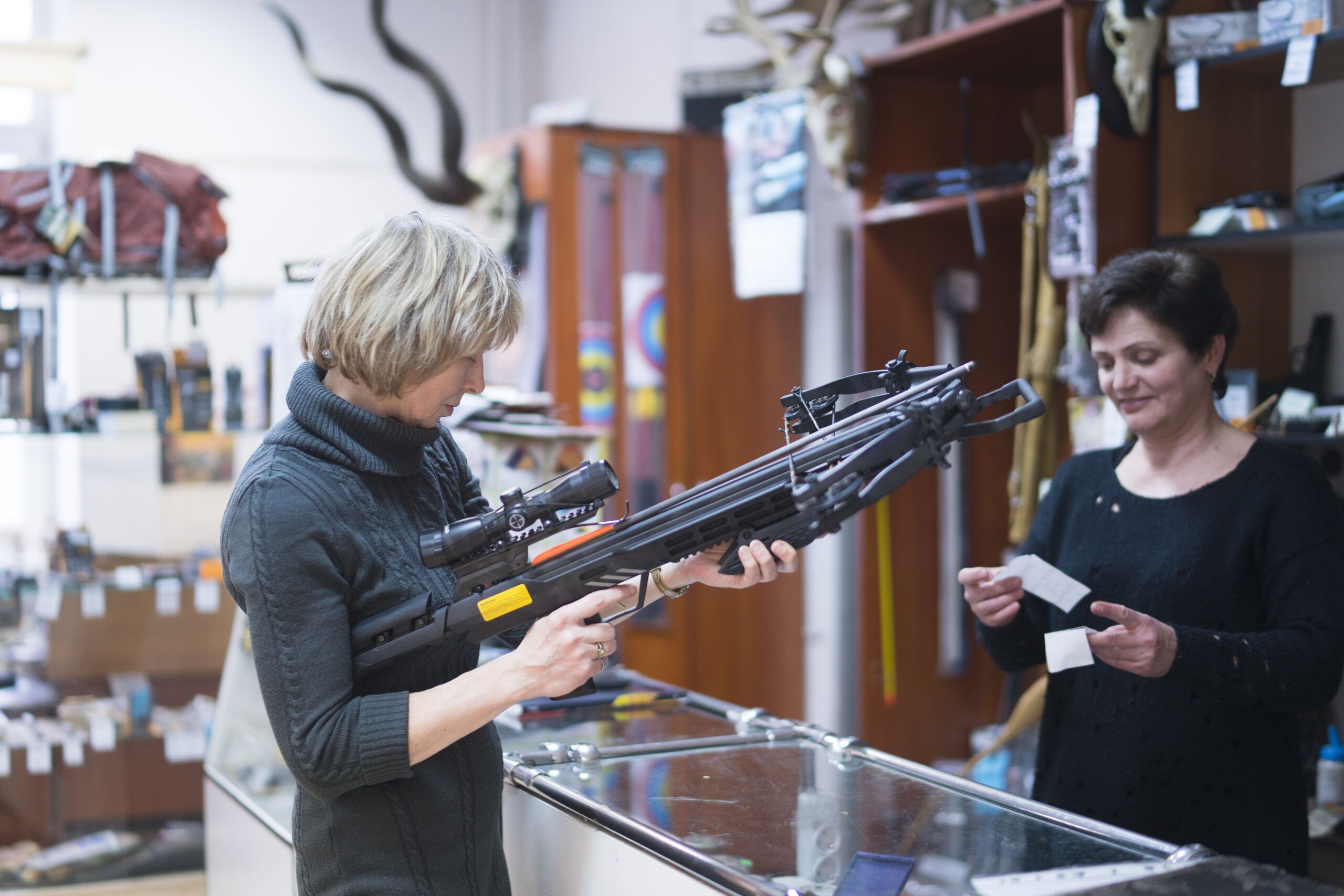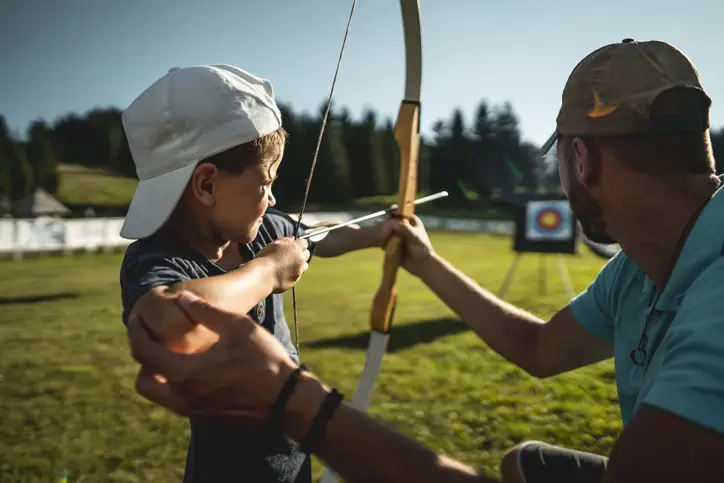Note: Our site links to archery and bowhunting products sold by outside vendors, and we may earn a small commission if you purchase an item after clicking one of these links. Learn more about our affiliate program.
If you’re like many of us, you’re interested in crossbows because you checked your state’s hunting season to find that crossbows are allowed during the much longer archery season. Or maybe crossbows just seemed like fun machines that make for an interesting hobby—which is definitely true!
But while it might have seemed simple enough to just grab the first crossbow you found online or at your local archery shop, you quickly realized crossbows come in many different forms and styles, and they’re produced by numerous manufacturers. Before deciding on a model, it’s best to understand the different types of crossbows, the best companies making them, and a few other details. This guide covers it all.
The 7 Types of Crossbows
The first thing to know is the different kinds of crossbow models and what they’re good for. Like any machine, the various designs have their upsides and downsides.
Recurve Crossbows
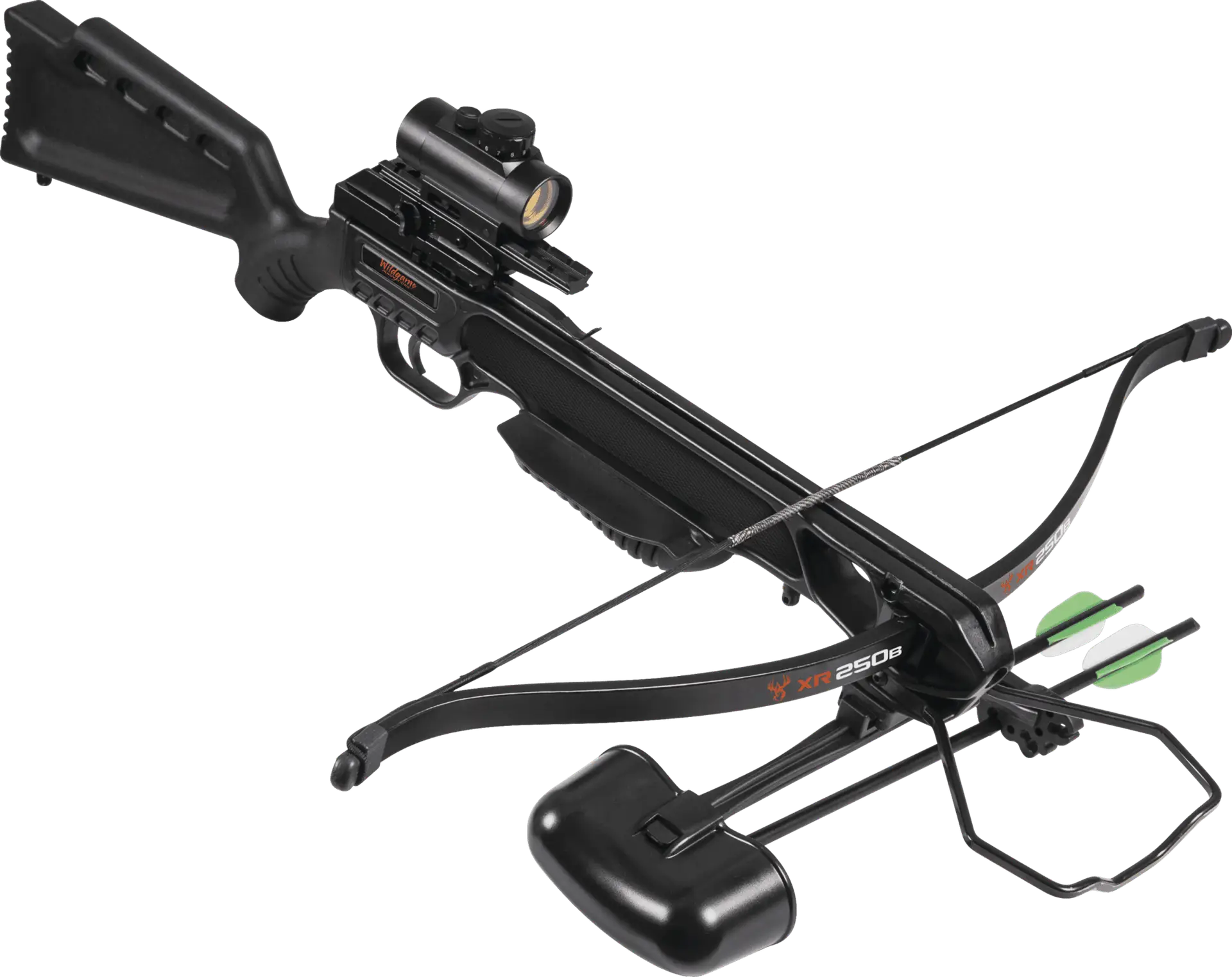
A recurve crossbow is the most traditional type of crossbow, what you’d imagine some medieval archer using—and in fact, they did.
“Recurve” refers to the fact that, at first, the bow limbs curve down away from the front of the bow, but then recurve back toward it, away from the shooter. This recurve lets the limbs produce more power while being shorter than otherwise. The recurve has the added benefit of holding the bowstring in place more effectively.
In shape, recurve crossbows aren’t all that different from the first crossbows used by the Chinese in ancient times or their European cousins during the Middle Ages. They are made from different materials, though. While you can get a traditional wooden crossbow if you want, most use aluminum or carbon fiber for the limbs. These can hold more tension than wood with less weight.
These days, archers and bowhunters choose recurve crossbows for a number of reasons. The long, curved limbs can hold a lot of power, sometimes even more than the more technologically advanced bows we’re going to discuss later. They tend to be larger with a long draw length. This makes them the powerful weapon necessary for taking down large game like moose, elk or bear. They also have fewer mechanisms and therefore require less maintenance, and their classical look is always in style.
Unfortunately, a recurve crossbow’s large size also means more recoil and a lot more noise when shooting. Plus, the longer limbs are more awkward when you’re hiking through the woods and can cause rustling in the brush. They’re also just heavier, making recurve crossbows all around less portable.
Recurve crossbows have lost popularity in the bowhunting world and are bigger with hobbyists. For bowhunters, they are usually inexpensive starter models. Instead, serious crossbow hunters go for compound crossbows, so let’s check those out.
Bottom Line: Recurve crossbows are good for bowhunters who are beginners or on a budget, but they lack the power of compound crossbows.
Compound Crossbows
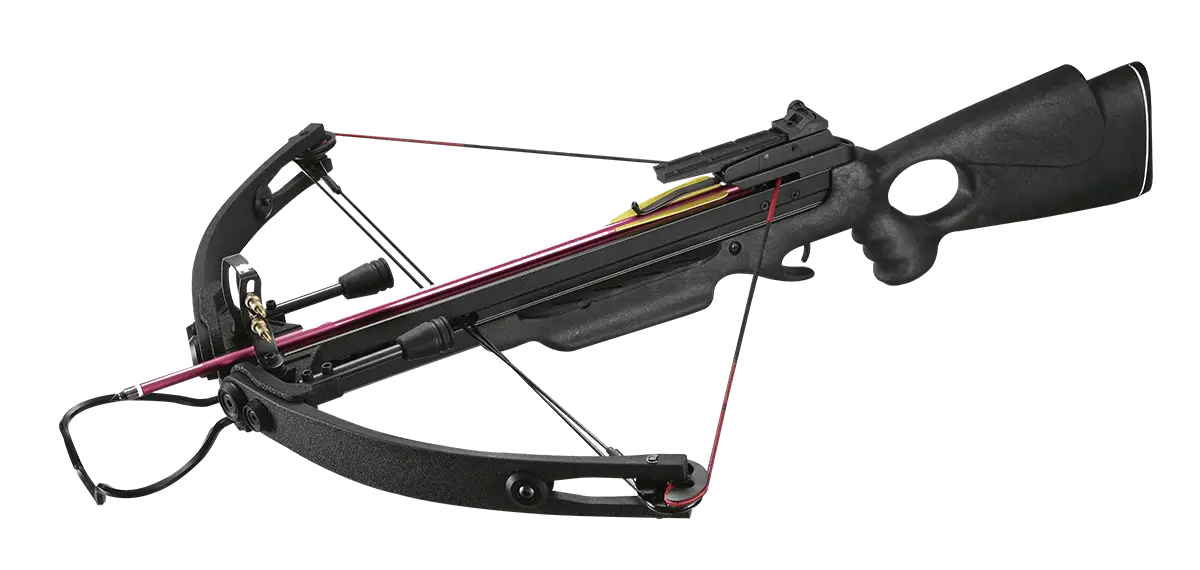
Compound crossbows are called such because they use a compound pulley system to draw more power from the bowstring while cutting down on the length of the limbs. These pulleys are called cams, and to understand why they give a crossbow so much power, we have to understand the physics behind them.
The compound cams feature a small pulley within a large pulley, both moving around the same axis. There are two cams, one on each limb. The bowstring loops through the larger pulleys of each cam, symmetrically on each side. Then, two cables connect the inner pulleys, each with a cable that is attached to its axis and then threaded through the inner pulley of the cam on the opposite limb.
When you draw the bowstring, it rotates the outer pulleys of the cams. This in turn rotates the inner pulleys. However, since they’re smaller, the inner pulleys move a shorter distance even though they’ve absorbed the same amount of energy. In physics, energy is force multiplied by distance, so if there’s less distance for the same energy, that means more force. This is stored in the cables of the inner pulleys.
As you can see, the physics involved in a compound bow is advanced. These crossbows are compact, which makes them easier to carry around and store, all while maintaining the power necessary to hunt wild animals. In fact, some shoot bolts upwards of 500 feet per second. Plus, a side effect of the cam system is decreased noise compared to a recurve crossbow.
As for downsides, some archers don’t like the compound cam system because of the maintenance required. Naturally, more moving parts means a higher likelihood something will break down. In general, modern compound crossbows are very reliable, but depending on the cam system, they may need regular synchronization. Certain models may also be on the heavier side thanks to the added equipment.
Bottom Line: Compound crossbows are the standard go-to for crossbow hunting.
Reverse Draw Crossbows
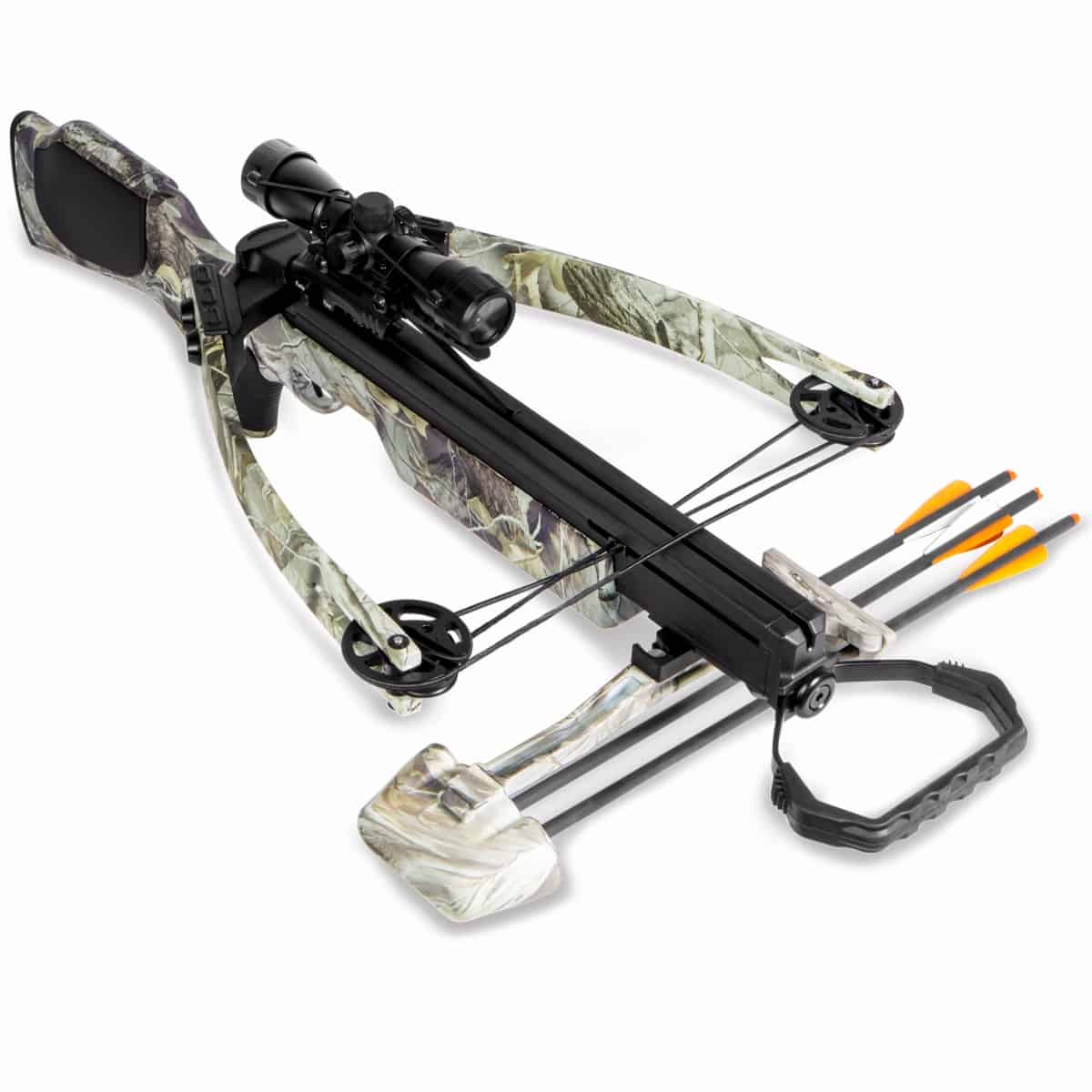
Reverse draw crossbows are a relatively new invention. As you can guess from the name, the limbs are oriented in the opposite direction from a traditional bow. That is to say, they connect in the rear of the crossbow and then curve forward. In reality, they aren’t so much turned around as they are turned perpendicular and attached in the back. This is possible because the cams are still at the front of the crossbow, even more forward than a normal compound bow. That’s where the bowstring attaches. When you draw the bowstring, it pulls the limbs inward, storing the energy.
Reverse draw crossbows cut down on your ATA, or axle-to-axle limb length, significantly. This helps with moving around when you’re hunting. Plus, by having the center of gravity at the rear of the bow, they’re easier to control and produce less noise and recoil when shooting.
The main advantage of the reverse draw design, though, is power. Having the cams in front allows the bowstring to push against the bolt along a longer length of shaft, resulting in more speed. The catch? Reverse draw crossbows are hard to find, and the technology is less understood, making maintenance a hassle.
Bottom Line: Reverse draw crossbows have serious power for big game hunting but require extra maintenance.
Rifle Crossbows
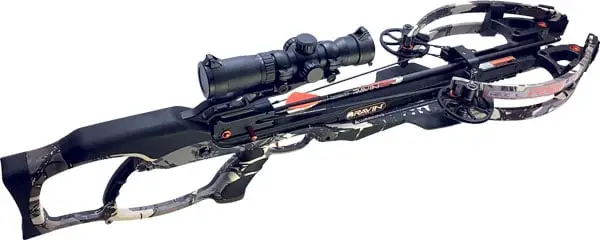
Rifle crossbows are compound crossbows taken up a notch. The limbs are turned in more horizontally to the shaft, which makes them extremely narrow. Some have ATAs as narrow as six inches. This helps their maneuverability. Additionally, although it’s not always the case, these models tend to be more powerful than their standard compound crossbow cousins.
Archers purchasing rifle crossbows are usually serious about archery and hunting, so manufacturers add a lot of great features. Powerful scopes enhance the weapon’s already high accuracy, and rifle-like stocks make shooting easy and comfortable while reducing recoil and vibration. That means a quieter shot.
Bottom Line: Rifle crossbows pack the most innovation and power of any model, so they’re best for serious hunting applications.
Pistol Crossbows
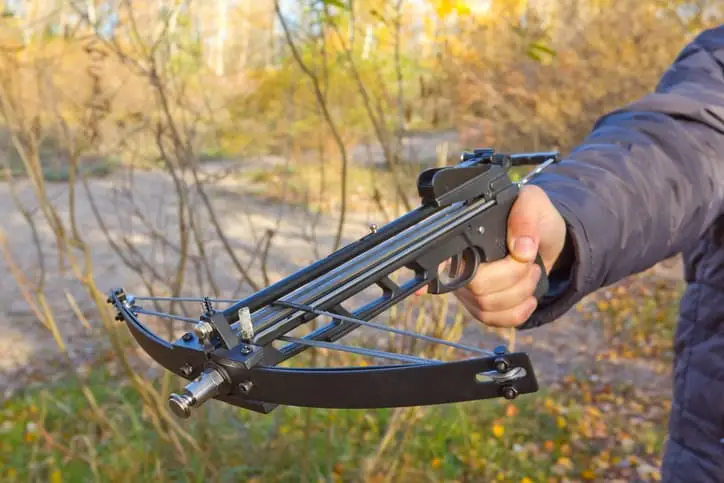
Pistol crossbows are exactly what they sound like: crossbows you can shoot one handed. They’re miniature versions of the recurve crossbow and have no stock to rest against your shoulder. Many are also “self-cocking,” which doesn’t mean they’re automatic weapons. Rather, there’s an easy lever to cock the crossbow rather than the difficult process of drawing a regular crossbow with your foot in the cocking stirrup. Otherwise they’re the same, just smaller.
Frankly, pistol crossbows are not practical. They’re more for fun. That’s because they rarely have higher than an 80-pound draw weight. This isn’t enough to take down more than the smallest of game, and it’s probably illegal in your state anyway. Still, you can enjoy them on the range. They’re a lot of fun. Thanks to their small size, you can also carry them around as a means of last-resort self-defense when hunting dangerous game like bear or moose.
Bottom Line: Pistol crossbows are basically toys but can potentially be back-up weapons for self-defense.
Bullet Crossbows
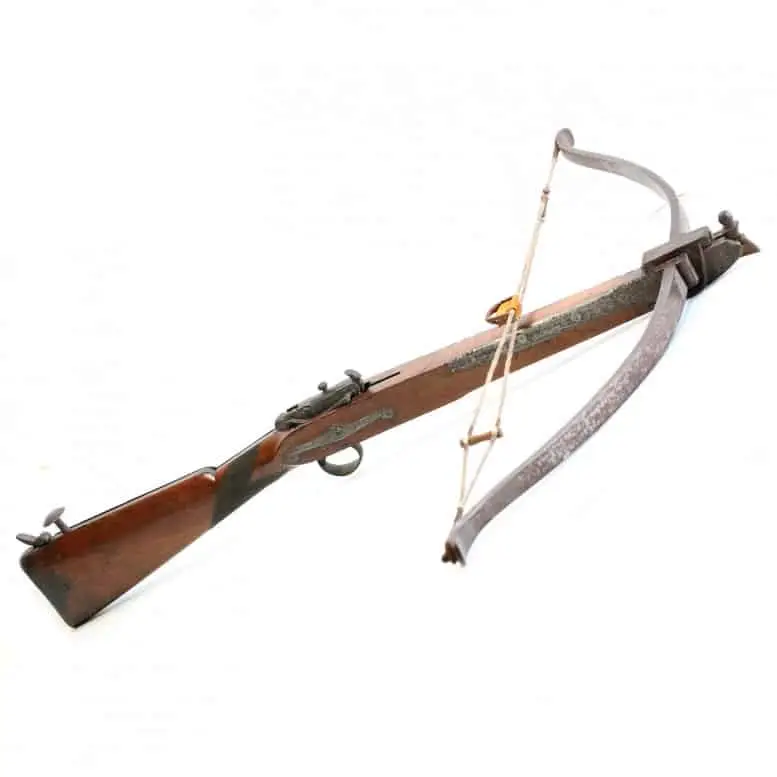
Bullet crossbows are essentially giant slingshots. Instead of shooting bolts, they shoot small bullets made of clay, wood or metal. This type of crossbow was invented during the Renaissance when it was used for training and competition shooting. They were and are much lighter, safer and easier to use than standard crossbows, which makes them great for beginners, kids or people who just want to play around with archery and have a good time.
Historically, people have used bullet crossbows to hunt small game. In the pre-industrial era, when metal was hard to come by and manufacturing a bolt was a more elaborate process, it didn’t make sense to use a full crossbow bolt on a small animal. You could save the big ammo for big game and use a bullet crossbow for squirrels and rabbits.
These days, you’d only hunt with a bullet crossbow for the novelty and challenge of it. Unfortunately, they lie in a legal gray area. Do they fall under crossbow or slingshot regulations? Depending on your state, one, both or neither may be illegal and come with a different set of rules. Whether you’ve come across an old antique bullet crossbow, made one yourself or found one of the few manufacturers who specially make them, it’s best to call your local game and fish commission or other relevant authority before trying to hunt with it.
Bottom Line: Bullet crossbows are antique weapons enjoyed by hobbyists and historians.
Repeating Crossbows
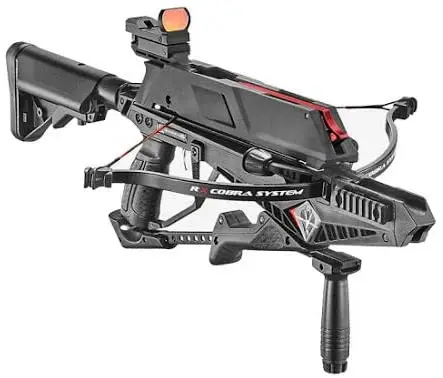
A semi-automatic crossbow, you say? Yes, it exists. In fact, it was invented nearly 2,000 years ago in Ancient China and used in battle by the Chinese army as recently as 1895 in the First Sino-Japanese War.
Repeating crossbows feature a magazine much like that of a modern repeating rifle. This magazine is filled with five to 10 bolts stacked on top of each other and fitted on top of the crossbow. When relaxed, the bowstring catches a groove on the inside of the magazine. You then use a lever on the back of the crossbow to pull the magazine back and the bowstring along with it. When it reaches the full cock position, the lever pushes the bowstring out of the groove, releasing it to contact the bolt and shoot it. Then the next bolt falls down into place. By simply moving the lever back and forth, you can shoot through the entire magazine in a matter of seconds.
Before they adopted modern firearms, the Chinese military used these repeating crossbows much like armies use machine guns today. The forced motion of pulling the lever forward and backward made their fire erratic, and the top-loaded magazine made it impossible to aim down the shaft. Instead of accurately placed shots, they provided a rapid spray of cover fire, sometimes thousands of bolts in a matter of minutes.
Repeating crossbows are primarily the domain of archery enthusiasts and serious hobbyists, not bowhunters. Modern repeating crossbows sometimes use other mechanisms like bolt actions to fire repeated shots, but the magazine has to be on top, which severely hinders your aim. Accuracy is certainly more important than rapid fire when it comes to bowhunting. Still, these are fun weapons that can give you a glimpse into ancient warfare. There are few models on the market, so many hobbyists choose to make one themselves.
Bottom Line: Repeating crossbows aren’t hunting weapons, but many survivalists like them for self-defense.
The Most Popular Crossbow Brands
Once you’ve decided on a type of crossbow, you have to figure out which brand to go with. These are the ones you’ll see most often on the market.
Ravin
Ravin Crossbows is a company that specializes in producing high-performance crossbows, mainly for hunting. They only have a few carefully crafted top-shelf models known for their unique design, which includes a compact and lightweight body, a high-speed cam system, and a fully integrated silent draw system.
One of the key features of Ravin crossbows is their Helicoil technology, which reduces friction and noise as the crossbow is drawn. This helps prevent you from alerting game to your presence, but more importantly, it keeps your cams balanced and in sync for better accuracy.
However, Ravin crossbows’ main claim to fame is their innovative cam system, which allows them to shoot bolts at speeds of up to 500 feet per second. In other words, Ravin makes some of the fastest crossbows on the market.
Bottom Line: Ravin makes powerful but expensive crossbows, so they’re best for serious bowhunters who hunt regularly in difficult situations.
Barnett
Barnett might be the most well-known crossbow brand as well as one of the most respected. Unlike a lot of manufacturers, they are totally devoted to crossbows. They’ve produced tons of different models over their more than 50 years of operation.
Barnett crossbows are also known for their affordability. The company offers a range of crossbows at different price points, making them accessible to a wider range of customers. At the same time, the crossbows are reliable and effective.
Similarly, Barnett crossbows are particularly user-friendly. Many come in ready-to-hunt packages, can be easily assembled, and fit a wide range of accessories. This makes them good for beginners or just any bowhunter who wants a crossbow to take advantage of the archery season but isn’t really interested in the ins and outs of crossbow mechanics.
Bottom Line: Barnett makes a range of crossbows great for bowhunting at all skill levels.
TenPoint
Like Ravin, TenPoint makes top-shelf crossbow models that tend to have a higher price tag but are powerful and effective, many shooting over 500 fps. Unlike Ravin, TenPoint makes a wide range of models, both under the TenPoint and Wicked Ridge brands. This provides versatility for a range of hunting situations as well as skill levels.
Another great thing about TenPoint is that they manufacture tons of different accessories as well as equipment like broadheads. This helps with compatibility.
Bottom Line: If you’re looking for brand loyalty, TenPoint has a range of crossbows and equipment for most situations.
CenterPoint
While CenterPoint does make some pricier, top-shelf models, most of their production line is designed with accessibility in mind. They might not be quite as powerful as some of the elite brands, but plenty of models still shoot over 400 fps.
Like Barnett, CenterPoint designs their crossbows as easy to assemble and easy to modify with aftermarket accessories. They even make many of these accessories themselves.
Bottom Line: CenterPoint makes a number of budget crossbows that are great for beginners.
Killer Instinct
Killer Instinct might not be quite as prominent on the market as CenterPoint, but they’re gaining popularity thanks to their value construction that’s still effective while being easy on your wallet. Plus, they just look cool.
Killer Instinct also manufactures arrows, bolts and broadheads. These are great to use in both Killer Instinct models or crossbows made by other companies.
Bottom Line: Killer Instinct crossbows are solid budget options.
Excalibur
Excalibur is an interesting brand in that they exclusively produce recurve crossbows. Because they’re recurves, their models have lower bolt speeds than others. Still, some of their top-shelf models can still reach 400 fps, and they’re solid hunting choices if you like the traditional style and minimal maintenance.
Bottom Line: Excalibur is the go-to brand for recurve crossbows powerful enough for hunting.
Crossbow FAQ
You might still have some questions after learning about the different brands and types of crossbows. Here are some of the most frequently asked questions, but if you have a different one, just get in touch!
What Is the Best Type of Crossbow for Hunting?
In our opinion, compound crossbows are the best choice for hunting. They produce more power to take down game humanely and effectively while being quieter for better chances of success. Recurve crossbows can also be used for hunting, but there aren’t many models, and most are budget options.
What Is the Difference Between a Crossbow and a Vertical Bow?
A crossbow consists of a horizontal limb assembly mounted on a stock, which shoots projectiles called bolts. The bowstring is cocked and held in place by a mechanism, and the energy stored in the limbs is released when the trigger is pulled, launching the bolt. In this way, they function much like a firearm and are held the same way.
A vertical bow, on the other hand, is a type of bow that is held, well, vertically and shoots arrows. The bowstring is drawn by hand and the energy stored in the limbs is released when the bowstring is released, launching the arrow.
Can You Use a Crossbow During Archery Hunting Season?
Crossbow regulations vary widely by state. Some allow hunters to use crossbows during the specified archery season, which is usually much longer than the gun season. Others have specific crossbow hunting dates. Some states, like Oregon, even ban crossbows altogether.
What Is the Best Bolt Speed for a Crossbow?
The fastest production crossbow in 2024 is the TenPoint TRX 515 XERO shooting at 515 fps. Is that the best? If you’re an experienced hunter, probably so. However, if you’re a beginner, that kind of power might be too much, meaning you should look for a less powerful model under 500 fps.
- SHORT & BLAZING FAST – Measuring just 29” short and 6” narrow, the reverse-draw TRX 515 shoots 515 FPS, making it the fastest, most accurate, and most technologically advanced crossbow!
- EXACT AIM. ANY DISTANCE. – The TRX 515 XERO features the revolutionary Garmin XERO X1i Rangefinding Scope. Forget the days of “gap-shooting” with multiple aim points—simply range, lock, and use the single aiming point provided.
- TWIN-RISER TECHNOLOGY – 41% lighter and 2x stiffer than traditional risers, the Twin-Riser design reduces the weight of the bow by 1 lb, and results in reduced riser flex & limb torque for unmatched accuracy.




